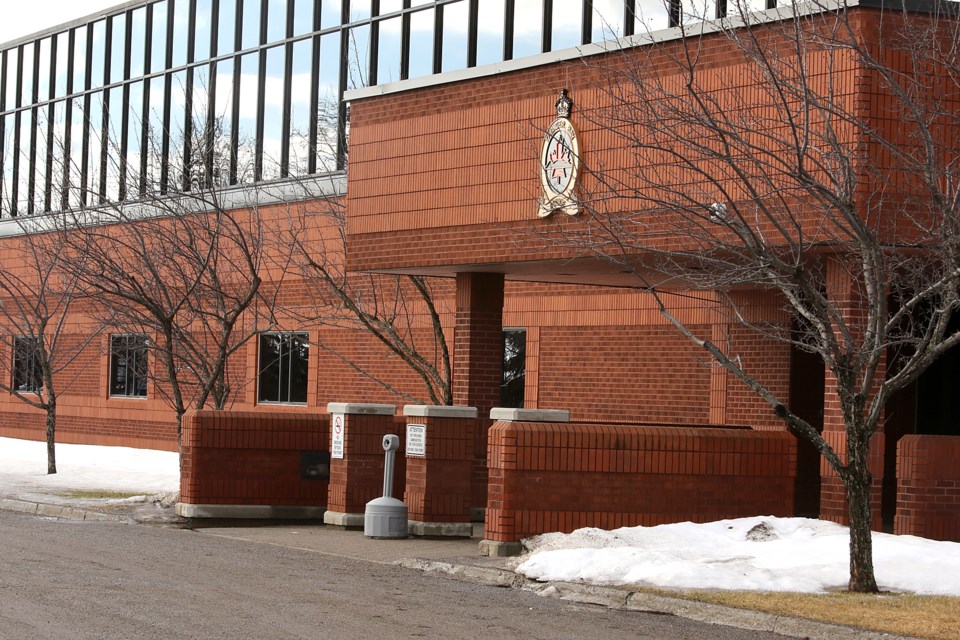THUNDER BAY - Use of force by Thunder Bay Police Service officers remains constant over the last two years, despite the number of calls for service increasing.
In a report presented to the Thunder Bay Police Services Board on Tuesday, Sgt. Rino Belcamino said the police service had 51,411 interactions with the public in 2018. Of those interactions, use of force was applied in 110 incidents, or .002 per cent of the time.
In 2017, police had 50,164 interactions with the public and 110 use of force reports were submitted.
All officers are required to submit a use of force report when interactions with the public include use of physical force on a person that results in injury, drawing a handgun, discharging a firearm, pointing a firearm, or the use of a weapon such as a conducted energy weapon or CEW.
Types of force can include firearms, empty hand, aerosol weapon, impact weapon, and tactical communication.
“Officers choose usually multiple use of force to achieve their goal,” Belcamino said. “There’s usually a combination that achieves success, so there is not one particular use of force item that worked out.”
Use of force is permitted for self-protection, protecting the public, effecting arrest, prevention the commission of an offence, preventing an escape, and destroying an animal.
In 2018, Thunder Bay Police Service officers listed protecting self as the most common reason for use of force at 81 per cent. The second most common reason was protecting the public at 65 per cent.
According to Belcamino’s report, the most common use of force method was tactical communication. However, tactical communication only resulted in compliance 46 per cent of the time.
Belcamino said tactical communication is often the first choice of officers, however, they usually must resort to other methods when it does not work.
“We did see, in terms of success, having a subject comply, it was only about 40 per cent where the subject complied,” he said. “So that forces officers to go to various other tools in their tool box in order to have someone comply with their demands.”
The second most common use of force was the drawing of a handgun, which occurred in 52 incidents in 2018 and was effective 58 per cent of the time.
A firearm was pointed at a person 37 times and had 81 per cent effectiveness. Aerosol weapons were used six times with an effectiveness of 83 per cent, while CEW was used 11 times and was effective 46 per cent of the time.
“All officers are trained as the ultimate professionals,” Belcamino said. “They are obviously going to try to use the least amount of force to achieve their goals. They are obviously going to try tactical communication first, then they will work their way through the spectrum depending on what the individual lends towards them.”
Firearms were discharged in a total of 14 incidents in 2018 and had 100 per cent effectiveness. However, Belcamino said all incidents involving the discharging of a firearm involved dispatching an animal.
In 2018, the largest portion of use of force involved weapon related calls, which accounted for 41 of the 110 public interactions, or 37 per cent
Calls listed as ‘other,’ which could refer to homicide scenes, address checks, suicidal, kidnapping, cell extraction, extra duty, wanted, or police assistance, accounted for the second highest percentage of use of force incidents at 40 of the 110 interactions, or 36.3 per cent.
Of the 110 use of force incidents in 2018, 19 involved injuries. This is a 48 per cent decrease from 2017, which saw 37 incidents resulting in injury. These may include self-inflicted injuries or injuries to other individuals involved.
Belcamino said it is prudent for the Police Service to continue to emphasize de-escalation training to protect officers and the general public.
“The training approach is based on an integrated response involving not only verbal skills, but also physical strategies and manageable impact factors,” Belcamino said. “The desired outcome is always a safe resolution to any use of force critical encounter involving the police and the public.”
